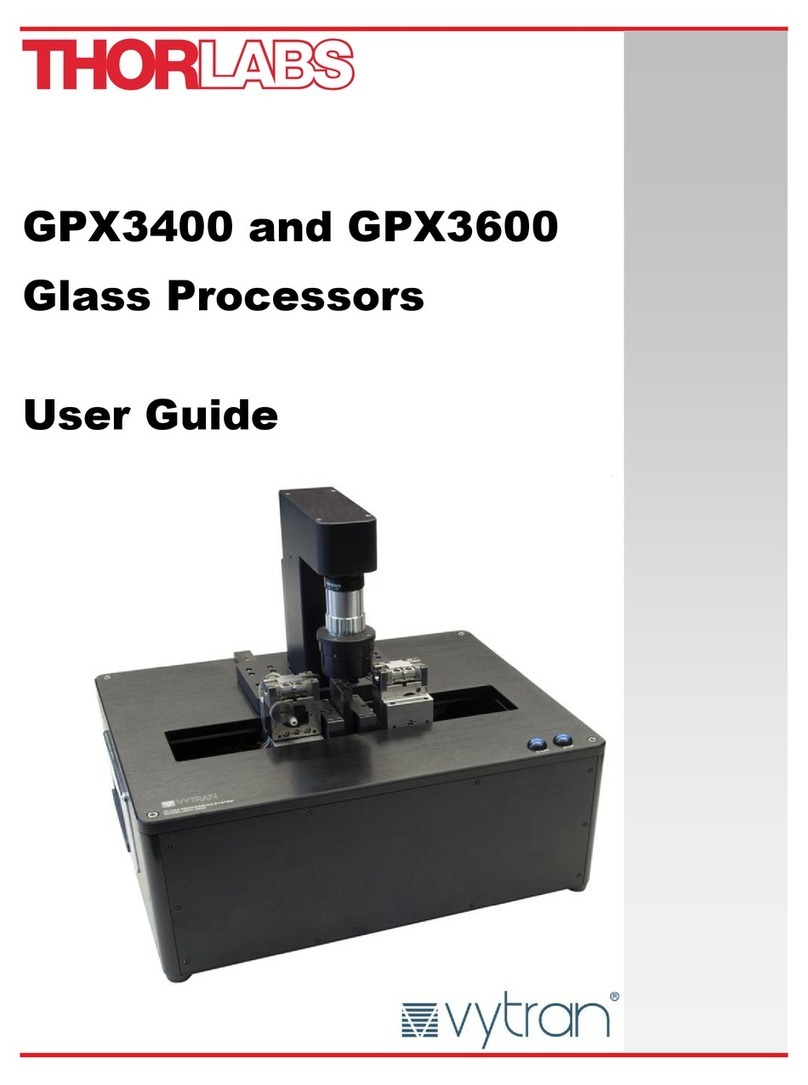
GPX4000LZ Glass Processor
5.10.1
Basic One Button Splice .....................................................................................................40
5.10.2
Modifying the Splice Routine...............................................................................................41
5.11. Measurement Tools .................................................................................................... 42
5.11.1
Measurement Guide............................................................................................................42
5.11.2
End View Quality Tool.........................................................................................................43
5.11.3
Click-Measure Tool .............................................................................................................43
5.12. Hot View Imaging........................................................................................................ 45
5.13. Laser Controls ............................................................................................................ 46
5.13.1
Laser On and Laser Warm-up ............................................................................................46
5.14. Additional Process Notes .......................................................................................... 46
5.14.1
Manual Alignment ...............................................................................................................46
5.14.2
Edge Alignment...................................................................................................................46
5.14.3
Active XY Alignment............................................................................................................46
5.14.4
Core Alignment ...................................................................................................................46
5.14.5
End View Alignment (or PM alignment) ..............................................................................46
5.14.6
Active Rotation Alignment ...................................................................................................47
5.14.7
Multiple-Stage and Multiple File Splicing ............................................................................48
5.14.8
Drawing Tapers...................................................................................................................49
5.14.9
Taper Properties .................................................................................................................49
5.14.10
Tension Monitor..............................................................................................................52
5.14.11
Thermal Core Expansion................................................................................................53
5.14.12
Fiber Lensing..................................................................................................................53
5.14.13
Mode Adaptors ...............................................................................................................53
5.14.14
Taper Tension Process ..................................................................................................54
5.14.15
Pre-Tension Process ......................................................................................................54
5.14.16
Tension Hold Process ....................................................................................................54
Chapter 6 Maintenance ..................................................................................................................... 55
6.1. General Care ............................................................................................................... 55
6.2. Keep the System Clean .............................................................................................. 55
6.3. Fiber Handler Maintenance ........................................................................................ 55
6.3.1
Changing Transfer Inserts:..................................................................................................55
6.3.2
Cleaning the Fiber Holding Block Insert..............................................................................56
6.3.3
Adjusting the Transfer Insert Block .....................................................................................56
6.4. Furnace Assembly Replacement Procedure ............................................................ 56
6.4.1
Changing a Filament Furnace.............................................................................................56
6.4.2
Changing a Laser Furnace..................................................................................................58
6.5. Changing the Lens Objective..................................................................................... 59
6.6. Cleaning the Mirrors................................................................................................... 60
6.6.1
Procedure............................................................................................................................60
Chapter 7 Appendix ........................................................................................................................... 61
7.1. Top Inserts .................................................................................................................. 61
7.2. Bottom Inserts ............................................................................................................ 62
7.3. Fiber Holder Insert Size Selection Guide .................................................................. 63
Chapter 8 Specifications ................................................................................................................... 64
Chapter 9 Regulatory ........................................................................................................................ 67
Chapter 10 Thorlabs Worldwide Contacts ........................................................................................ 68





























